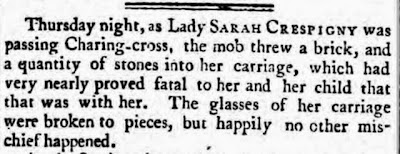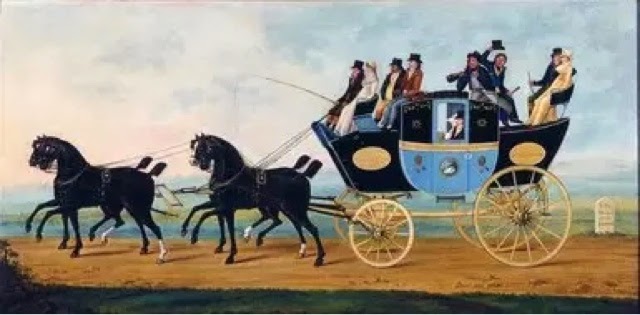When reviewing records associated with the surname Champion de Crespigny, I came across records which I had not been able to associate with a member of the family. There were a number of twentieth century records that I could not link until I reviewed the United States naturalization records and from these I was able to assemble the family history. There was one small problem, the man who was the head of this family appears to have died in 1905 before he married.
Edmund Alexander Champion de Crespigny, youngest child of Philip Augustus Champion de Crespigny (1850-1912) and Annie Rose Charlotte Champion de Crespigny nee Key (1859-1935), was born 12 July 1890 and baptised at Bramshaw, Hampshire, England, on 14 October 1890.
At the time of the 1891 English census he was 8 months old and living at Round Hill, Bramshaw with his parents. His father was a retired Royal Navy officer. Edmund’s two brothers and sister were also at home as well as two adult cousins of his parents and three servants.
In 1901 he was at boarding school at Bramshaw.
There is a 1905 Irish death index record for a 14-year-old EAC de Crespigny who died at Ballycastle, Antrim. There is a memorial at Bramshaw, Wiltshire for him stating he was buried 30 May 1905 and that he was Edmund, son of Philip Augustus Champion de Crespigny and Rose Charlotte. He is not on the 1911 census. His mother, moreover, declares she gave birth to four children and one had died. The two brothers of Edmund and his sister were living in 1911, so the dead child was almost certainly Edmund.
On 30 December 1919 an Edmund Alexander Champion de Crespigny aged 29 (born 1890) married Elise Emma Richard at Lausanne, Switzerland. He stated he was the son of Philip Augustus Champion de Crespigny and Annie Rose Key and that he had been born at Lyndhurst. Lyndhurst is less than six miles from Bramshaw.
I have come across people who have assumed the surname Champion de Crespigny because it would appear they claimed to be an illegitimate child of a member of the family. This case seems to be different as the man has stated that his mother is the wife of Philip. He is claiming to be the son who had died in 1905.
This man continued to assume the identity though his first name evolved to Claude and his wife, Elise, was known as Lilette. I was only able to reconcile the records when reviewing his 1960 naturalization papers. What follows is the chronology of his life as told in records that have been digitised and can be found through genealogy websites, in particular through ancestry.com.
In August 1920 Claude de Crespigny, engineer and director, arrived in Boston, Massachusetts, on the SS Canopic via Canada. He stated that he was born in London and his wife was Lillette. She had a Swiss address.
On 9 August 1922 Claude and Lilette had a child, Michelle Rosamonde Champion de Crespigny, born in Switzerland. She came to America in 1928. According to Michelle’s 1941 application for naturalization the family settled in Chicago.
In 1923 Claude Edward Alexander de Crespigny, mechanical engineer, living at Scranton Pennsylvania, declared his intention to apply for naturalization.
On 25 November 1927 Claude Edmund Alexander Champion de Crespigny applied for naturalization in Chicago. He stated he was born 12 July 1890 at White Lodge Lyndhurst. He was currently a typewriter salesman, living in Chicago. He had arrived on the SS Canopic in 1920. He had been living in Illinois since 1924. His wife was Lillette and they had married in Switzerland. She was currently living in Toronto. They had a daughter who was currently living in Switzerland. The application was denied by the court in December 1928 due to “want of prosecution; unable to obtain depositions”. It would seem Claude failed to follow through on his application.
At the time of the 1930 US census Claude, Lillette and Michelle were living at 1546 Farwell Avenue, Chicago. Claude was a typewriter salesman.
In December 1930 the Blue Island Suburban Star of Blue Island, Illinois, a suburb of Chicago, reported that Professor Claude Campion de Crespigny (sic), a local resident, would talk on “Britain in India today”. Professor de Crespigny was a member of the faculty of Loyola University and had served with the British Legation in India. (As this was before 1947 when India gained independence, the term British Legation in India makes no sense.) I have found no evidence of a Professor de Crespigny at Loyola University and given that Claude was living in Chicago, Illinois, I believe this lecturer is Edmund Claude. There are a number of universities with that name including Loyola University, Chicago.
On 26 September 1935 Claude R Crespigny married Ruby V. King in Manhattan, New York.
When Claude’s wife Lilette applied for naturalization in 1944 she stated she and Claude had divorced in 1940.
In 1940 Claude and Lilette’s daughter Michelle was at school at Morgan Park High School, Chicago. I have not been able to locate any member of the family on the United States 1940 census.
In 1942 Claude was living at 14 East 54 Street New York when he registered for the draft as Claude Crespigny. He was 52 years old and stated he was born 12 July 1890 at Lyndhurst, England. A person who would always know his address was Fred W Peterson of same address. His employer was Fashion Center, Dechard, Tennessee and business was Travel for Dechard, Tennessee. On the reverse of the card it stated that Claude had a gunshot wound on his forehead and a bayonet wound on his right hand. He was 5’9″ tall with hazel eyes and brown hair.
In 1960 Claude again petitioned for naturalization. He was living at 414 Fannin, Houston Texas and was a hotel clerk. He had one daughter, Michelle, wife Ruby who had been born St Vincent British West Indies and that he had married in 1945 in New London, Connecticut, but since divorced. He stated his name had changed to Claude Edmund Crespigny but his full true and correct natural name was Edmund Alexander Champian de Crespigny (sic). He stated that he had arrived in America under the name Claude Emil de Crespigny.
Claude died 31 January 1967. The informant was Mrs Ella Roland. She stated his date of birth was 12 July 1890 and that he had been born in England. She did not know the names of his parents. She stated he was a US citizen, his occupation was hotel clerk of Houston Texas. His usual address was 811 Sul Ross appartment number 3 in Houston Texas. He had been living in Houston for 20 years. He died at Ben Taub General Hospital of hypotension due to upper gastrointestinal bleeding. There was an autospsy. His body was donated to medical research.
In 1947 Frederick Philip Champion de Crespigny died. Frederick was the older brother of Edmund and was also the seventh Champion de Crespigny baronet. Theoretically Edmund would have become the eighth baronet. The man known as Claude de Crespigny did not come forward. Not least, no doubt, because the family knew that Edmund had died in 1905 and would have exposed him as an imposter. The title of baronet passed to Frederick’s nephew, Vivian. On Vivian’s death the title became extinct.
Had the title passed to the man who had assumed the identity of Edmund, the title still would have become extinct as Edmund, later known as Claude, had no sons, only a daughter.
Michelle married in 1944 and died in 1998. She had at least one child.
 Family tree showing the male line of descent from Claude Champion de Crespigny (1734-1818) the 1st baronet. The eight baronets are highlighted in yellow.
Family tree showing the male line of descent from Claude Champion de Crespigny (1734-1818) the 1st baronet. The eight baronets are highlighted in yellow.
I do not know who Claude de Crespigny, the man who died in Texas in 1967, really was, nor what he gained out of assuming the identity of the son of Philip and Rose de Crespigny.
Related blog post
References – unless otherwise stated the references were retrieved through ancestry.com
- Baptism record FHL Film Number:6343375
- 1891 England census Class: RG12; Piece: 910; Folio 73; Page 15; GSU roll: 6096020.
- 1901 England census Class: RG13; Piece: 1050; Folio: 80; Page: 9.
- 1905 death of EAC de Crespigny aged 14 registered Ballycastle Antrim Apr-Jun 1905 vol 1 page 58 retrieved from index of Irish deaths 1864-1958 through FindMyPast.com.au
- 1905 memorial at Bramshaw from Wiltshire Memorial index number 27214 retrieved through FindMyPast.com.au
- 1911 England census Class: RG14; Piece: 5904; Schedule Number: 69
- 1919 marriage from Great Britain, selected marriages FHL Film Number: 1494402 Reference ID: Bk #8, p. 13, no. 23
- 1920 arrival Book Indexes to Boston Passenger Lists, 1899-1940 Roll Description: (065) Jan· 6, 1920-Oct· 17, 1920 and Canada, Ocean Arrivals (Form 30A), 1919-1924
- 1923 naturalization declaration Illinois, Petitions for Naturalization, 1906-1991; NAI Number: 593882; Record Group Title: Records of District Courts of the United States, 1685-2009; Record Group Number: RG 21
- 1927 petition for naturalization Illinois, Petitions for Naturalization, 1906-1991; NAI Number: 593882; Record Group Title: Records of District Courts of the United States, 1685-2009; Record Group Number: RG 21
- 1928 naturalization application denied from US Naturalization records Roll Description: D-250 through D-320 Otto
- 1930 census Census Place: Chicago, Cook, Illinois; Roll: 493; Page: 8B; Enumeration District: 1861; FHL microfilm: 2340228
- Article in Blue Island Suburban Star of 12 December 1930 retrieved through FindMyPast.com.au
- 1935 marriage to Ruby King (Certificate 23578)
- 1941 declaration of intention to apply for naturalization by Michelle Rosamonde de Crespigny Petitions for Naturalization, 1906 – 1991; NAI Number: 6756404; Record Group Title: Records of District Courts of the United States, 1685-2009; Record Group Number: RG 21
- 1944 naturalization for Lilette de Crespigny Illinois, Petitions for Naturalization, 1906-1991; NAI Number: 593882; Record Group Title: Records of District Courts of the United States, 1685-2009; Record Group Number: RG 21
- 1940 Morgan Park High School Year book
- 1942 US World War II draft registration cards Records of the Selective Service System, 1926-1975; Record Group Number: 147 image 4129
- 1960 petition for naturalization Petitions for Naturalization, 1907-09/30/1991; NAI Number: 571499; Record Group Title: Records of District Courts of the United States, 1685-2009; Record Group Number: 21
- Texas Department of State Health Services; Austin Texas, USA; Texas Death Certificates, 1903–1982 certificate number 10095







 Family tree showing the male line of descent from Claude Champion de Crespigny (1734-1818) the 1st baronet. The eight baronets are highlighted in yellow.
Family tree showing the male line of descent from Claude Champion de Crespigny (1734-1818) the 1st baronet. The eight baronets are highlighted in yellow.











































